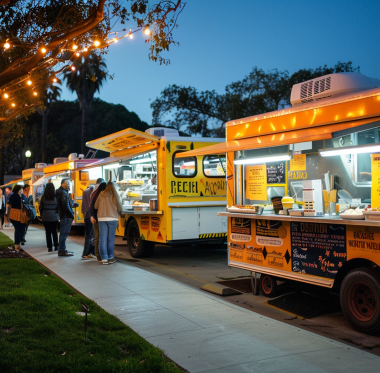Designing and deploying a kiosk lane requires careful planning to ensure it meets the needs of users, fits well within the space, and provides a seamless experience. Here’s a comprehensive guide to creating an effective kiosk lane:
1. Purpose and Functionality
- Primary Use: Determine the primary function of the kiosks, such as ticketing, information, food ordering, or self-service checkouts.
- Target Audience: Understand the demographics and specific needs of the users to tailor the design and features accordingly.
2. Site Selection and Layout
- Location: Choose a high-traffic area that is easily accessible to the target audience. Ensure visibility and convenience.
- Flow and Navigation: Design the lane to facilitate easy movement and avoid congestion. Ensure clear signage and intuitive navigation.
3. Kiosk Design
- Hardware: Select durable and reliable kiosk hardware suitable for the intended use. Consider weatherproof options for outdoor locations.
- User Interface: Design a user-friendly interface with clear instructions, large touchscreens, and easy-to-read fonts.
- Accessibility: Ensure kiosks are accessible to all users, including those with disabilities. Consider height, reach, and tactile feedback.
4. Infrastructure and Connectivity
- Power Supply: Ensure a reliable power source for all kiosks. Consider backup power solutions for uninterrupted operation.
- Internet Connectivity: Provide stable and secure internet connections, especially if the kiosks rely on online services.
- Networking: Integrate kiosks with the necessary backend systems for data synchronization and real-time updates.
5. Security
- Data Security: Implement robust security measures to protect user data and transactions. Use encryption and secure connections.
- Physical Security: Protect kiosks from vandalism and theft with sturdy construction, secure mounting, and surveillance.
6. Payment and Transactions
- Payment Options: Offer multiple payment methods, including credit/debit cards, mobile payments, and cash where applicable.
- Receipt Printing: Provide options for receipt printing or digital receipts to accommodate different user preferences.
7. Maintenance and Support
- Regular Maintenance: Schedule regular maintenance to ensure kiosks are functioning properly and address any issues promptly.
- Technical Support: Provide accessible support channels for users encountering problems. Consider remote monitoring and diagnostics.
8. Aesthetics and Branding
- Design Consistency: Ensure kiosks align with the overall branding and aesthetic of the environment.
- Customization: Allow for customization of kiosk exteriors to fit specific themes or promotional campaigns.
9. Environmental Considerations
- Weather Protection: For outdoor kiosks, provide adequate protection against weather elements like rain, sun, and wind.
- Eco-Friendly Options: Use energy-efficient components and materials. Consider solar-powered kiosks for sustainable solutions.
10. User Experience
- Ease of Use: Prioritize a simple and intuitive user experience. Provide clear instructions and minimize the steps required to complete tasks.
- Feedback Mechanisms: Include options for users to provide feedback to help improve services and address any issues.
11. Regulatory Compliance
- Local Regulations: Ensure compliance with local laws and regulations, including those related to accessibility, safety, and data protection.
- Permits and Approvals: Obtain necessary permits and approvals from relevant authorities before installation.
12. Marketing and Engagement
- Promotional Displays: Use kiosks for displaying promotional content, advertisements, or information about nearby attractions and services.
- Interactive Features: Incorporate interactive elements such as touchscreens, QR codes, and NFC for engaging user experiences.
13. Scalability
- Modular Design: Design kiosks to be easily upgradable or expandable to accommodate future needs and technological advancements.
- Flexible Configuration: Allow for easy reconfiguration or relocation of kiosks as requirements change.
By addressing these considerations, you can create a well-designed kiosk lane that enhances user experience, meets functional requirements, and integrates seamlessly into its environment.




© All Copyright 2024 by Kingston Hills. Design by Designinghubworld.in


